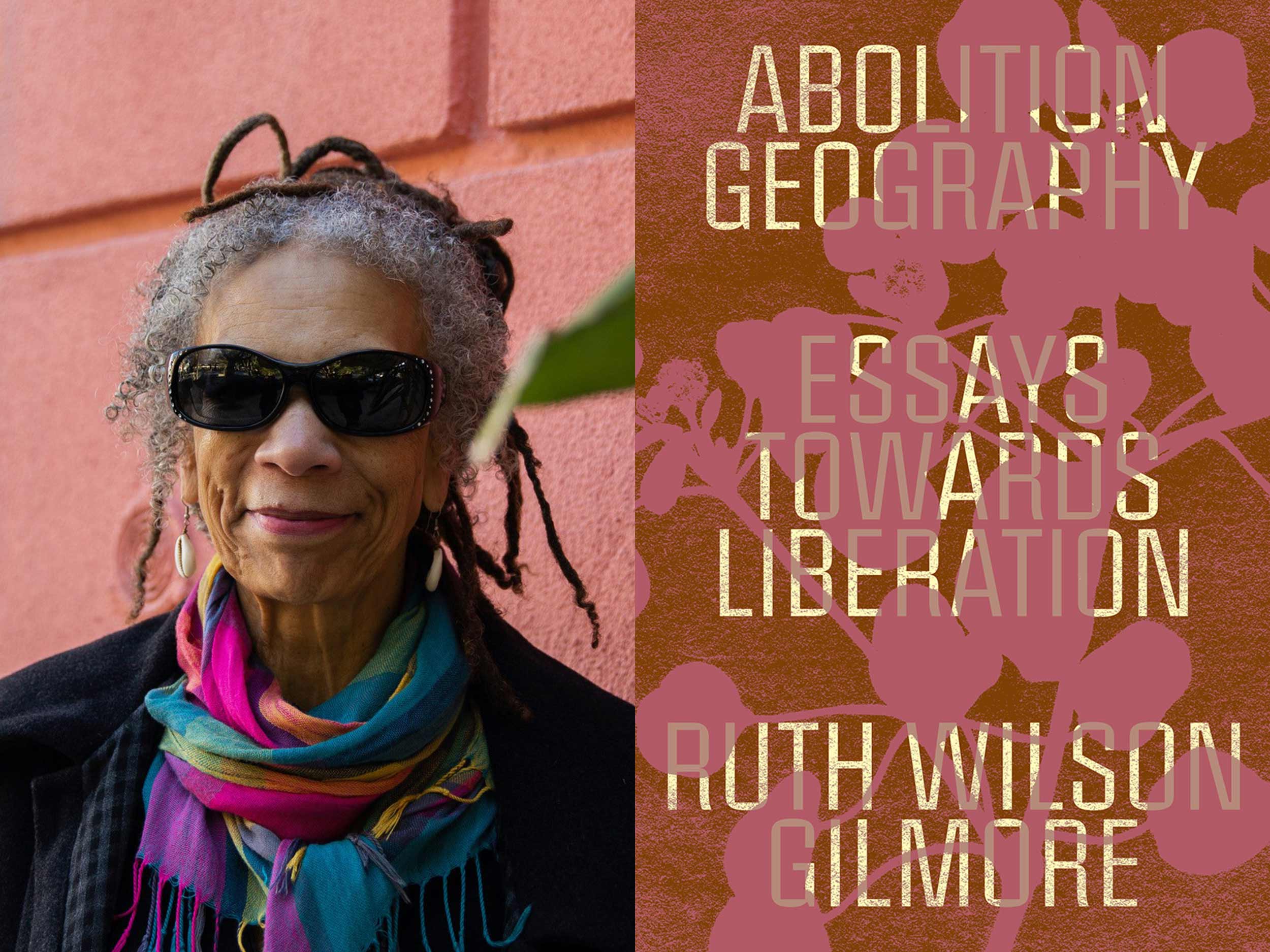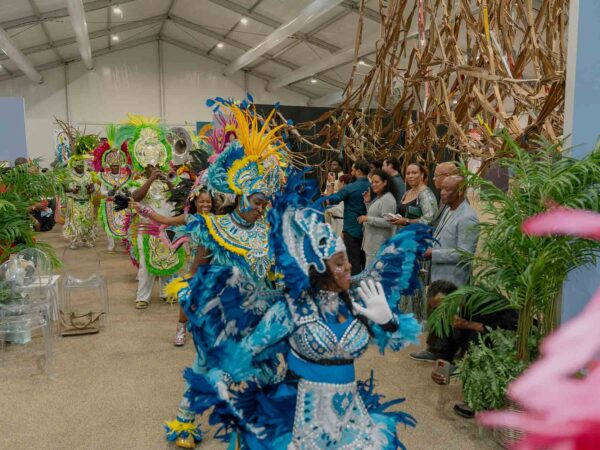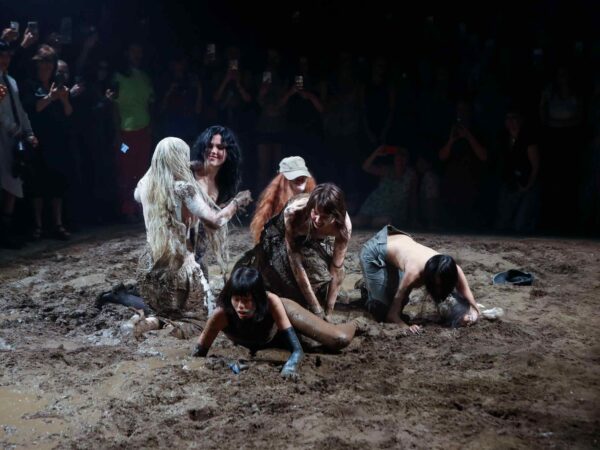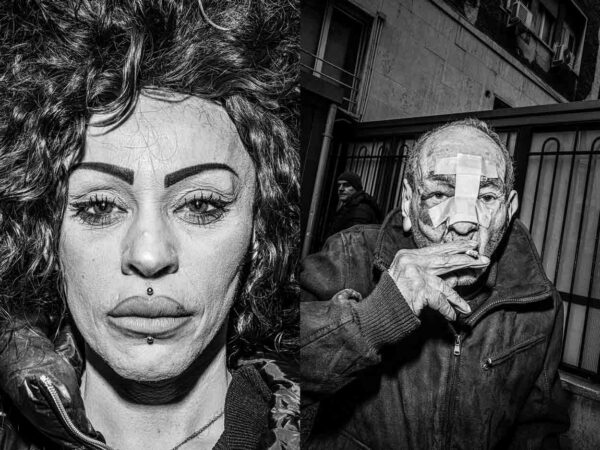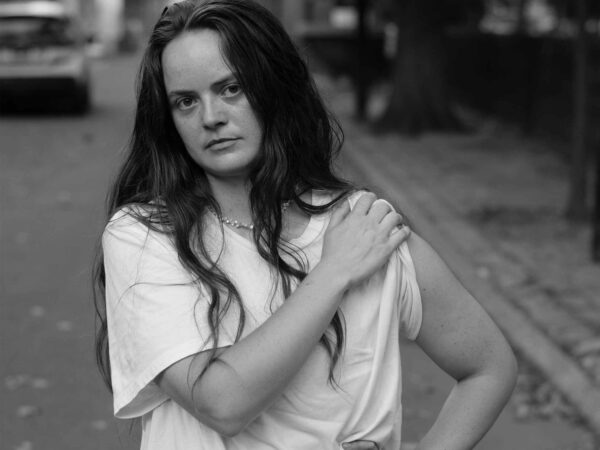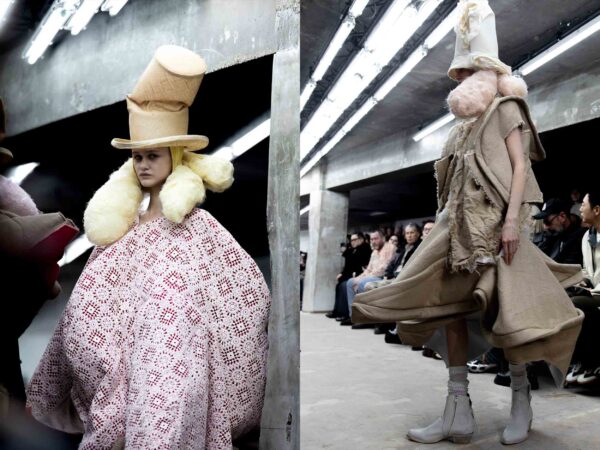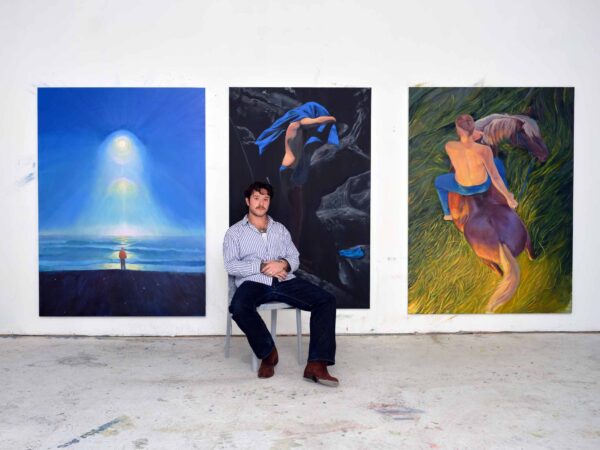The prison abolitionist and scholar discusses community policing, the failure of Anglo-American geography, and the notion of freedom as a place
“Where life is precious, life is precious,” says Ruth Wilson Gilmore, the 72-year-old prison abolitionist who has become one of the movement’s most important thinkers and organizers. She’s speaking over Zoom from Portugal, where she spends time when she’s not teaching at the CUNY Graduate Center in Manhattan. I recognize the phrase as one Gilmore is known for. Like her writing and, more broadly, her speaking, the maxim captures just how straightforward mutual care ought to be. Yet, in the context of crime and prisons, we insist on meeting harm with harm. “Where life is precious, life is precious,” reads as a kind of inverse of the proverb “an eye for an eye.” It is, in seven words, a blueprint for a more humanitarian way of doing things.
This is the project of prison abolition overall. Abolition is not just about decarceration; it’s also a politics of care, anti-violence, and optimism. Or, in Gilmore’s words, “In order to undo the forces of violence shaping our everyday lives, we would have to change everything.”
When the concept of incarceration was first presented, around 1750 in England, it was intended as reform—a more humane way to punish people than torture or capital punishment. The specter of the prison and all that it stands for was—and still is—supposed to deter individuals from criminal activity in the first place, thus keeping society safe and orderly. Prisons were meant as a place for criminals to participate in self-reflection and religious penance, hence the name “penitentiary.”
However, it’s become clear that prisons aren’t serving their function, for rehabilitation nor prevention. Take the fact that global prison populations continue to grow over time, or look at reoffending patterns. (Forty-four percent of prisoners in the US reoffend in the first year of release.) That is before we speak of the inhumane conditions and extreme violence that exist in prisons globally, as well as racial disparities in incarceration rates.
Prison reformists argue that we should make prisons better and, in some instances, build more of them. Abolitionists believe that we could address the structural inequality that causes many people to wind up in prisons and jails in the first place—what Gilmore calls the “organized abandonment” of vulnerable communities. For her, this concept has been clear-cut since she began abolition work over three decades ago, long before the growing interest in anti-policing and prison abolition galvanized by 2020’s Black Lives Matter movement. In 1998, for example, Gilmore worked closely with Angela Davis on founding Critical Resistance, the US-based organization fighting the prison industrial complex. In 2007, she published a seminal book on the subject, Golden Gulag, which took California prisons as a case study for how economic and political forces lead to high incarceration rates. There is even a Twitter account dedicated to her: @RuthWilsonGilmoreGirls shares memes and news relating to Gilmore’s work.
“Prison is not just a response to a ‘free-floating thing called crime’—it’s a response to ‘surplus’ populations. Which is to say that prisons are designed to absorb people: those people who have been abandoned by the state.”
The nature of that work is far-reaching. As an intellectual, Gilmore (or “Ruthie,” as she is known personally) draws lines across disciplines and time and global contexts, finding connectivity among them. If you were to lay her work out visually, it might resemble a map of the solar system. Interrogate everything seems to be her MO. Yet, while her thinking feels light years ahead of many of us, Gilmore has a talent for putting complicated subjects in simple terms—likely a result of her critical view of academia as an institution, and her years of experience working outside of it, with a broad range of unions, labor movements, and grassroots organizations. Gilmore is a dogged Marxist and applies this perspective to prisons, looking at how they operate within a broader economic and social context to uphold modes of production. In other words, prison is not just a response to a “free-floating thing called crime”—it’s a response to “surplus” populations. Which is to say that prisons are designed to absorb people: those people who have been abandoned by the state.
Gilmore’s Marxist perspective was embedded from a young age. “I grew up a working-class girl in Southern New England in Jim Crow America,” she recalls. “My family was very engaged in the mid-20th-century Civil Rights struggle, as well as labor union organizing that goes back some generations.” Her father was a tool and die maker who led the labor struggle at the Winchester Repeating Arms factory; her grandfather, a janitor at Yale who organized the first blue-collar union at an Ivy League school. Her cousin—Civil Rights activist John Huggins, leader of the LA Black Panther division—was killed along with fellow member Bunchy Carter by Black nationalist group US Organization, after the FBI, under COINTELPRO, sent fake letters between the groups inflaming tensions. “One might say my family led me to where I am; one might say they pushed me to where I am. Both things are true.”
After studying drama for her bachelor’s at Yale, Gilmore turned to geography, her academic specialty. “I think a lot of people switch off when you say ‘geography’ in Anglo-America, either because it’s not taught anymore,” says Gilmore, “or because it’s taught as the most boring set of superficial facts one must memorize.” A sinister strain of geography that emerged in the late-19th century—reinforcing racism, colonialism, and inequality as the natural order of the world—further damaged the subject’s reputation. “Environmental determinism is the most dramatic example of that—the idea that the soil that produced your blood makes you distinctive, and anyone not from there is wholly inferior in ways that matter and should be dealt with through organized violence. The extent to which it influenced a racist, regressive eugenics led us straight to, among other things, Nazism and Holocaust.” In the wake of this trend, she says, much of the work that professional geographers focused on was either culturist or very statistical: “Both cases fled the political. Those are the reasons geography declined.”
Gilmore, rather, saw the possibility of geography as interdisciplinary, as a way to ask: Why do things happen the way they do? In bringing this perspective to prisons, she has become a leading scholar in the field of carceral geography—the “study of the interrelationships across space, institutions, and political economy that shape and define modern incarceration”—as well as the creator of the term abolition geography, the name of her most recent book and first collection of lectures and writing from across her career, published by Verso in 2021.
“One might say my family led me to where I am; one might say they pushed me to where I am. Both things are true.”
Abolition geography, as a concept, “starts from the homely [notion] that freedom is a place,” Gilmore explains—which is to talk about place not just as a locality, but also as an entire ensemble of people and the bonds among them. “That brings in so many things: the relationships between people in households, in cities, in the countryside, or in the workplace, crossing borders and so forth; mutual aid groups or labor unions or political parties or household dependency and care.” In this sense, we might consider racial capitalism, gender dynamics, or localized socioeconomics as geographically contingent—the organization of people and environmental resources in such a way as to empower some communities and disempower others.
Since Gilmore began researching the dynamics that influence prison populations, US incarceration rates have grown drastically overall. In California, where Ruth focuses Golden Gulag, since 1970, the number of people behind bars has increased 274 percent. In the nation as a whole—while the overall US incarcerated population has declined since its peak in 2009—it is still almost double the rate of the early-1990s, with an estimated 2.1 million people in prisons, nearly one in 100. Women’s incarceration has rocketed to almost 10 times its level in 1970.
I ask Gilmore how we can explain this, and she asks me to consider another question: “Whether the propensity to commit crime increased, or whether more things were defined as criminal over time.” To abolitionists, she points out, crime is an infrastructure built around definitions of criminality, based on a given context—the conditions under which people will resort to harm to solve problems, a category that evolves alongside policy and lawmaking.
Like other abolitionists, then, Gilmore argues that we might consider prison growth alongside the political manufacturing of crime as a way to justify prisons. Take Clinton’s 1994 Crime Bill, which increased “community policing” and allocated $9 billion to states for funding law enforcement, and $12.5 billion to build more prisons. Or more recent shifts, such as how “community policing” has taken the form of greater police presence in US schools (a reality justified by America’s mass shooting epidemic). If the prison industrial complex describes the relationship between a government and the various businesses that benefit from institutions like incarceration, we might also consider who does not benefit—where the buck literally falls. On both the benefits and the costs, Gilmore reminds us not to fall into the trap of focusing on private prisons, which make up under 10 percent of prisons in the US (although the rate is higher for immigration detention centers). “Whether the management and ownership of the buildings is private or public,” she says, “every dime that’s allocated to make that carceral system happen is public. Every dime.”
Today, the US boasts one of the world’s largest prison populations, along with China, Russia, and Brazil. El Salvador has the highest inmate-to-population rate. Globally, we often see the growth of prisons aligning with widening inequality. “In the UK, the attack on the welfare state and the hardening of borders have resulted in the expansion of criminalization and lockups, while the latest Home Office policing bill will result in the criminalization of more people,” she explains. “Other places that have had huge rises in criminalization and incarceration include Russia after the Soviet Union, India and Brazil with hot economies, and South Africa after the fall of Apartheid—so what we’ve seen in all these cases is deepening equality. But there is no place on the planet like the US, no matter how you count.”
“Other places that have had huge rises in criminalization and incarceration include Russia after the Soviet Union, India and Brazil with hot economies, and South Africa after the fall of Apartheid—so what we’ve seen in all these cases is deepening equality.”
While this trajectory seems daunting, there are positives, Gilmore points out. Though the US prison-building project has accelerated since she began her work, responses to the problems she’s encountered have changed for the better.
During earlier speaking engagements, Gilmore would be asked the question: But what do we do with the terrible few? In other words, What about the murderers, rapists, and child molesters? “Part of the response that seemed to work was, Let us, for a moment, not dismiss them, but draw a conceptual line around those people you’re worried about. On the other side of the line, 95 percent of those locked up—including violent crimes—are not in those categories. The idea is to leave the murderers, rapists, and child molesters until last, and foreground that 95 percent.” She continues: “Of course, there really are harms that happen between people, and we don’t pretend there aren’t real vulnerabilities to real harm that we must address. In the context of change that we are trying to provoke, it’s not possible to have a blueprint that says, We guarantee if you do these five things, terrible things aren’t going to happen anymore. But we think we can empirically guarantee that having more police everywhere all the time does not diminish vulnerability to harm for those likely to experience it.”
Since 2014 and the formulation of Black Lives Matter, Gilmore has seen more people than ever interested in getting involved with both police abolition and prison abolition movements. “People came quite suddenly to political consciousness because of Michael Brown’s murder in Ferguson, Missouri, and the rise of BLM encouraged people to realize that, because the voices of organized violence do hold life-and-death power over so many communities, the urgency to do something could no longer be ignored.” In light of the recent murder of Tyre Nichols, the 29-year-old Black man recently pulled over and beaten by cops in Tennessee, or the murder of activist Manuel Paez Téran by cops as he peacefully protested in Atlanta in January, the urgency to defund, dismantle, and abolish police and prisons shows no sign of abating.
Perhaps that’s why, these days, the question Gilmore hears more often is: But what can we do?
Some interlocutors sound ready or enthusiastic, others defeatist, she says. She has an answer for both: to encourage not only campaigning against the building of prisons (through organizations like CURB, who, with Gilmore’s help, recently prevented the construction of a new women’s jail in LA County), but also to campaign against those wider social changes that will reduce the number of people inside—ways to “change people’s vulnerability to violence, whether that’s domestic violence, interpersonal harm, robbery, and so forth, by fighting inequality and poverty through labor movements or social welfare reform.”
“It’s not possible to have a blueprint that says, We guarantee if you do these five things, terrible things aren’t going to happen anymore. But we think we can empirically guarantee that having more police everywhere all the time does not diminish vulnerability to harm for those likely to experience it.”
Overall, Gilmore’s advice for anyone interested in abolitionist work is to start from where you’re at. “If you’re a member of any justice organization, there is likely something that organization does that connects to the problem of criminalization and mass incarceration, directly or indirectly. As a student said to me the other day, every generation comes to this on their own terms.”
Gilmore knows this approach works because of the number of people she’s seen come to abolition through various avenues. In addition to BLM, the “debate” around where to house trans and gender nonconforming prisoners has brought queer people like myself into conversations around abolition. (Reformists and carceral feminists have argued that we build specialized prisons for trans people—a notion Gilmore calls “hair-raising.” Instead, she says, we should “recognize that the distinctive needs of different kinds of people, which are failing to be met, are proof that the system is rotten and murderous.”) Others come to abolitionist work by campaigning for women who defended themselves in domestic violence incidents, or against pregnancy in prisons. Others are anti-borders, concerned about housing crises, or pursuing environmental justice, recognizing the negative effect a prison can have on local biodiversity.
It is Gilmore’s work—connecting the dots between disparate areas of activism—that lights the way for various grassroots struggles that may have the power to impact prison populations, and the knowledge of how reducing prison populations might impact those of us not incarcerated, creating a social environment where life is viewed as more precious than it currently is. (Interestingly, the murder rates in states without the death penalty have remained consistently lower than those that do exercise it.) Her optimism is infectious; her mentions of all the routes toward abolition are not to overcomplicate the subject, but to illuminate the many hundreds of things we can do—all of the ways in.
What’s next for Gilmore? Her forthcoming book builds on her work in Abolition Geography, exploring the relationships between race, capitalism, gender, environmental justice, class wars, militarism, interpersonal violence, old-age security and how we might use this vocabulary to critique the prison-industrial complex. Its title feels like a fitting testament to her career so far, an apt note to end on: Change Everything.
Abolition Geography is published in paperback by Verso.


